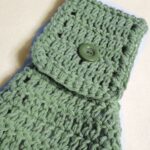Last Tuesday, my sister went back to Capitol to have her leg checked. She was operated the week before to have a possibly cancerous “bukol” removed. Fortunately, biopsy casted off her fears. The “bukol” was apparently caused by her sensitive skin’s reaction to a pimple or a mosquito bite. After a week of waiting for the stitches to heal, the patch was removed, and WOW! The stitched area looked disgusting. The doctor then prescribed her this drug to reduce the inflammation around the area. I got curious and read the entire information sheet, mastered the details, and had this article made for those who wish to know what the drug is all about. (I had to know; my skin is after all more sensitive than hers. :P)
Companies
Elica 0.1% products are manufactured by Schering Canada Inc. at Pointe Claire, Quebec, Canada. The products were copyrighted in 1987/1988 by the Schering Plough International. In the Philippines, the products made their way through the Schering-Plough Corporation (importer) holding its office at Torsedillas St., Salcedo Village, Makati. (According to the box, however, the office is at 12F San Miguel Properties Centre, Saint Francis St., Ortigas Center, Mandaluyong.)
Active Ingredient
Elica 0.1% products are intended for external use only, and are recommended to be stored in room temperature, specifically not more than 30 degrees Celcius. Basically, they act against corticosteroid-responsive dermatoses, or skin diseases involving corticosteroids. Examples of these skin diseases are Psoriasis and Atopic Dermatitis. Psoriasis is characterized by red patches and white scales. Atopic Dermatitis, on the other hand, are symptomatic inflammations that appear hereditary. Basically, these skin diseases manifest themselves in the human skin as inflammation and pruritus (itch). These manifestations are then treated by Elica 0.1% products through the active ingredient, Mometasone Furoate – an anti-inflammatory and anti-pruritic synthetic corticosteroid. It is present in Elica 0.1% products in a ratio of 1 mg in 1 g of the formulations, hence the percentage (0.1%). Most of the time, Elica 0.1% products are used simultaneously with anti-fungal or anti-bacterial substances, or with other corticosteroids. This happens because most dermatoses exhibit skin infection. In cases that simultaneous treatment of infection and corticosteroid-responsive dermatoses shows unfavorable changes, infection is treated first before the inflammation and/or the pruritus. In the case of my sister, the drug was prescribed after it was discovered that my sister exhibited inflammation in the area where she was operated, that is, long after she took anti-biotic medications.
Formulations
Elica 0.1% products are present in different forms: cream, ointment and lotion. All formulations are made up of the active ingredient (Mometasone Furoate), purified water and phosphoric acid (used to adjust the PH level). In addition to these components, the lotion is made up of Propylene Glycol, Isopropyl Alcohol, Hydroxypropylcellulose, Sodium Phosphate and Monobasic Monohydrate. The cream and the ointment, on the other hand, are made up of Propylene Glycol Stearate, White Petrolatum, White Wax and Hexylene Glycol; while the cream has added components, such as, Stearyl Alcohol, Cetereath-20, Titanium Dioxide, Aluminum Starch and Octenylsuccinate. The cream and the ointment are packed in 5 g tubes, while the lotion in 30 mL bottles. All substances are applied in the skin once daily – thin film for the cream and ointment, and few drops for the lotion. (This made me wonder: How come my sister’s prescribed dosage is twice daily for two weeks? She has been using the cream for four days already and she shows no symptoms of adverse reactions yet. Perhaps product dosage may be modified by prescribing physicians from time to time.) Overdosage may be cured by treating electrolyte imbalance and practicing slow withdrawal of the drug. Abrupt drug withdrawal probably causes withdrawal symptoms to the user, though information about withdrawal symptoms was not provided in the information sheet.
Administration & Precaution
There are two ways to administer Elica 0.1% products: topical and systemic. Both methods of administration, however, facilitate systemic absorption, that is, the body system nonetheless absorbs the drug whatever form of administration is used, leading to adrenal suppression (wherein hormones secreted by the adrenal glands are withheld). Adrenal suppression, in turn, can lead to growth stunt and/or Cushing’s Syndrome – characterized by muscular weakness and obesity due to excessive corticosteroid. Extensive body surface treatment, the use of occlusive technique in application (sandwiching the drug between the cut), and long-term use make the body highly susceptible to these damages. Pediatric patients (children), particularly, are more susceptible than adult patients because the ratio of their skin surface to their body weight is greater than those of adults. Furthermore, through systemic absorption, the drug can make its way through the breast milk. Although the information sheet states that drugs secreted along with breast milk are unlikely to be harmful, it is advised that nursing and lactating mothers should have the option of whether to nurse or not to nurse and take the drug. In addition, safe usage by pregnant mothers is not yet established. Because of this, it is recommended that physicians prescribe the drug to pregnant mothers only when the potential benefit to the mother is greater than the potential risk to the fetus.
Adverse Reactions
Adverse reactions on the use of Elica 0.1% products are reported very rarely or infrequently. Among these are pruritus, skin atrophy (flaking), paresthesia (tingling sensation), burning, folliculitis (inflammation of hair follicles), and acneiform reaction. If used with other topical corticosteroids, additional reactions such as irritation, hypertrichosis, hypopigmentation, perioral dermatitis, allergic contact dermatitis, skin maceration, secondary infection, striae and miliaria manifest. These adverse reactions are curiously cousins of inflammation and pruritus, the very manifestations that the active ingredient is designed to combat. Perhaps, homeostasis (balance) in corticosteroids lie between too much or too less of the hormone.
Limitation
Given the precautionary measures and adverse reactions resulting from the use of the drug; and the risk of potential abuse and misuse by children, pregnant mothers and nursing/ lactating females; Elica 0.1% products are accordingly covered by the Foods, Drugs, Devices and Cosmetics Act. It is therefore mandatory for the products to require prescription before use.



